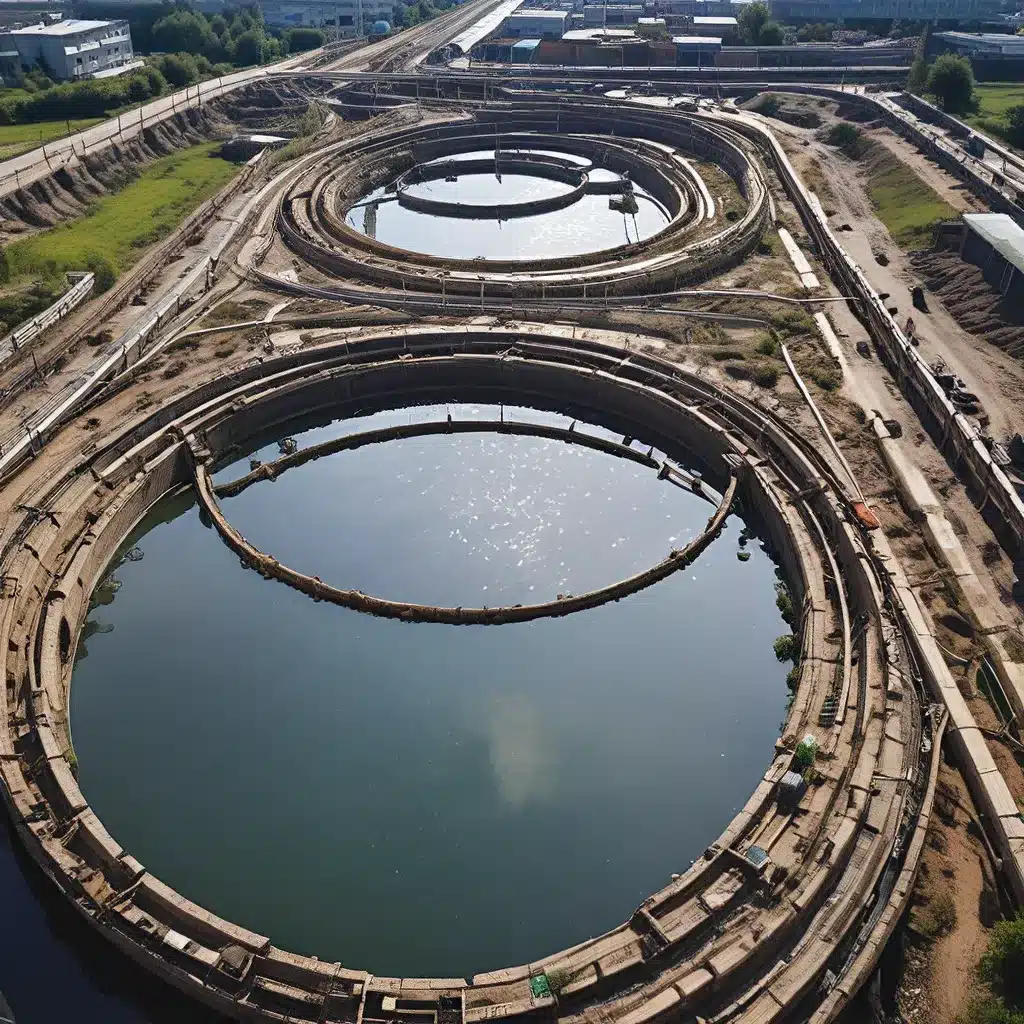
As I sip my morning coffee, I can’t help but ponder the untapped potential that lies right under our noses – or more accurately, underneath our cities. You see, the water we flush down the drain every day holds a treasure trove of valuable resources, just waiting to be harvested. It’s time to stop viewing wastewater as mere waste and start seeing it as a goldmine of opportunity.
Turning Trash into Treasure: The Promise of the Circular Economy
Let’s face it, the traditional linear economic model of “take, make, and dispose” is not sustainable. It’s a one-way street that leads straight to environmental devastation and resource depletion. But what if we could flip the script and create a closed-loop system, where waste becomes the raw material for new and valuable products? This is the essence of the circular economy – a concept that is gaining traction across industries, including the water and wastewater treatment sector.
According to a recent study published in the Journal of Mining and Environmental Sciences, adopting circular economy principles in the mining industry presents a “transformative opportunity” to turn waste into wealth, reduce environmental impact, and enhance economic resilience. The same principle applies to the water industry, where we can extract and repurpose a wide range of resources from wastewater, from nutrients and minerals to energy and even clean water itself.
The Untapped Treasure Trove of Wastewater
Picture this: every time you flush the toilet or rinse the dishes, you’re sending a veritable trove of valuable materials down the drain. Nitrogen, phosphorus, and potassium – essential nutrients for agriculture – are present in high concentrations in wastewater. Metals and minerals like copper, nickel, and zinc can also be recovered. And let’s not forget about the energy potential locked within the organic matter, which can be harnessed through processes like anaerobic digestion.
But the real prize? The water itself. Through advanced treatment technologies like reverse osmosis and membrane filtration, we can purify wastewater to the point where it’s cleaner than the original source. This reclaimed water can then be reused for a variety of purposes, from irrigation and industrial processes to even replenishing drinking water supplies.
As the Aramco Expats article on the circular economy points out, “a circular economy aims to keep resources in use for as long as possible, extracting maximum value from them while in use, then recovering and regenerating products and materials at the end of their service life.” This is precisely the mindset we need to apply to the water industry.
Pioneering the Wastewater Revolution
The good news is that the water treatment industry is already leading the charge in the circular economy movement. Companies like Inland Waters Inc. are at the forefront of this revolution, developing innovative technologies and approaches to extract the maximum value from wastewater.
One of their flagship projects involves a state-of-the-art nutrient recovery system that can extract phosphorus and nitrogen from wastewater streams. These reclaimed nutrients can then be transformed into high-quality fertilizers, closing the loop and reducing the need for energy-intensive and environmentally-damaging synthetic fertilizers.
But the innovation doesn’t stop there. Inland Waters has also pioneered the use of anaerobic digestion to convert the organic matter in wastewater into biogas, a renewable energy source that can power the treatment facility itself. It’s a classic case of “waste-to-wealth,” where the very materials we used to discard are now fueling our operations.
The Circular Economy in Action: Real-World Examples
The circular economy in action is a sight to behold. Let’s take a look at some real-world examples of how wastewater is being transformed into valuable resources:
As Malvin Delgado highlights in his LinkedIn article, the city of Tucson, Arizona, has been pioneering the use of reclaimed water for industrial and agricultural purposes. By treating wastewater to a high standard, they’re able to provide a reliable source of clean water for cooling power plants, irrigating crops, and even replenishing groundwater aquifers.
But the circular economy goes beyond just water reuse. In Europe, several municipalities have invested in nutrient recovery systems that extract phosphorus and nitrogen from wastewater. These reclaimed nutrients are then sold to local farmers, reducing their reliance on energy-intensive and environmentally-harmful synthetic fertilizers.
And in Asia, a growing number of wastewater treatment plants are harnessing the energy potential of organic matter through anaerobic digestion. The biogas produced is then used to power the treatment process, making the facilities more self-sufficient and reducing their carbon footprint.
The Future of Wastewater: Unlocking a Treasure Trove of Opportunity
As we look to the future, the potential of the circular economy in the water industry is truly staggering. Imagine a world where every drop of water is reused, every nutrient is recovered, and every bit of energy is extracted from our wastewater streams. It’s a future that’s not only environmentally sustainable but also economically viable.
The key? Embracing a mindset shift, where we no longer see wastewater as a problem to be solved, but rather as a resource to be harnessed. It’s a future where our waste becomes our wealth, and where the water treatment industry emerges as a driving force in the circular economy revolution.
So, the next time you flush the toilet or turn on the tap, take a moment to ponder the hidden treasures that lie beneath the surface. Because with the right technology and the right mindset, we can transform wastewater from a liability into a true asset – one that promises to reshape the way we think about the world’s most precious resource.


